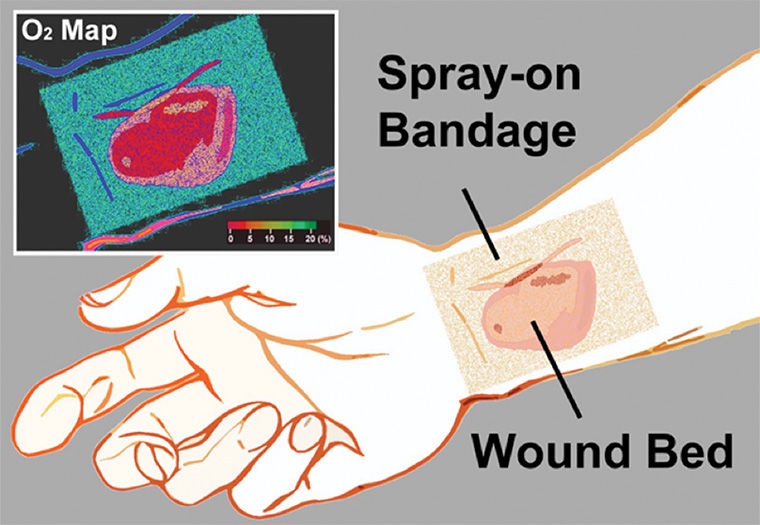Researchers develop ‘smart’ bandage
October 13, 2014
Researchers at Harvard Medical School have created a new bandage that has the ability to estimate how fast a wound is healing.
Conor Evans, assistant professor at Harvard Medical School, said the research began as a collaboration between his laboratory and a plastic surgeon at the U.S. Army Institute for Surgical Research in San Antonio, Texas.
Evans said the goal was to create a bandage that could accurately and simply report the level of oxygen in tissues, wounds, skin grafts and other injury sites.
“The goal was to make something that was green if the tissue was good [and] red if the tissue was unhealthy, which can provide a very simple and easy way to monitor severe wounds or burns and grafts,” Evans said.
The design of the liquid bandage that the team engineered included a sensing element comparable to the size of the phosphor-—a substance that glows in the presence of radiation—that would be found in a wrist watch, Evans said. The bandage is designed to measure the amount of oxygen present in the wounded tissue and the phosphors will emit either a green or red luminescence depending on that oxygen concentration level.
He also said the bandage will indicate any problems in the healing process of a wound and can better help physicians determine the proper steps to treat the injury. The bandage will also turn red if the wound is infected.
“It will let us know whether the wound is healing properly and if we see there is a problem with the wound that will give [us] an ability to intervene earlier and intervene with knowledge,” Evans said. “It is very difficult when a wound is not healing to understand what the problem is. It could not heal because it is infected. It could not heal because it has low oxygenation. It could not be healing because the pH of the wound is not correct.”
The types of wounds that concern the team are those that become easily infected, he said.
Evans said the bandage could provide a lot more insight into infections and the healing process of extensive wounds.
“These are cases where you have large open wounds the body simply cannot close and they become infected extremely easily,” Evans said. “In fact, that is the biggest problem [because] these wounds become infected very quickly. The kind of infections that we are really concerned about are those [because] those kinds of infections… actually will expand and get worse, and people can lose limbs and even their lives if these infections get really bad.”
The most common types of infections right now are those that occur in chronic wounds.
Evans said the health of wounds is evaluated only by experienced physicians who carry out a set of qualitative tests, pressing on the wounds, looking at the color change, smelling the wound and observing how the wound is healing overall, Evans said.
The bandage could solve not only doctors’ and nurses’ problems but the patients’ as well when it comes to infected wounds, Evans said.
“This bandage provides a quantitative way of looking at wound health that … [assesses] whether or not a wound is doing well,” Evans said. “It provides a way of looking at wounds and assessing whether the wounds are well-oxygenated, and this can be done by essentially anyone in any situation.”
He said the new bandage was also created to be used along with high quality technology.
“It could be done in the field, hospital, at home, and we designed this so that it could [be] compatible with smartphone technology,” Evans said. “You could actually take a picture of the bandage on your smartphone. We are creating the software that will allow the picture to be interpreted by the phone to give you a map of oxygenation, and that can be done quantitatively.”
Lauren Puia, adult-nurse practitioner at Columbia’s Student Health Center, said any invention that helps the advancement of medicine is worthwhile.
“Any time you make advancements with antibiotics or bandages or something like that, you have less length of infection time,” Puia said.
James Sanchez, a senior journalism major, said he is sure everyone has had injuries, but said he would only use the bandage for a severe injury that was worth being admitted to a hospital.
“I would use that bandage to give me an idea of how severe it is to determine whether I should go to a hospital or treat it at home,” Sanchez said.
Evans said although the bandage has been created, it still has to go through the process of being approved by the Food and Drug Administration. He said the bandage will not heal wounds faster than normal bandages do, but it will help gauge the severity of a wound as it heals.
“It will definitely give us an idea of what a wound is doing and allow a doctor or nurse to make the correct diagnosis and help the patient,” Evans said.








